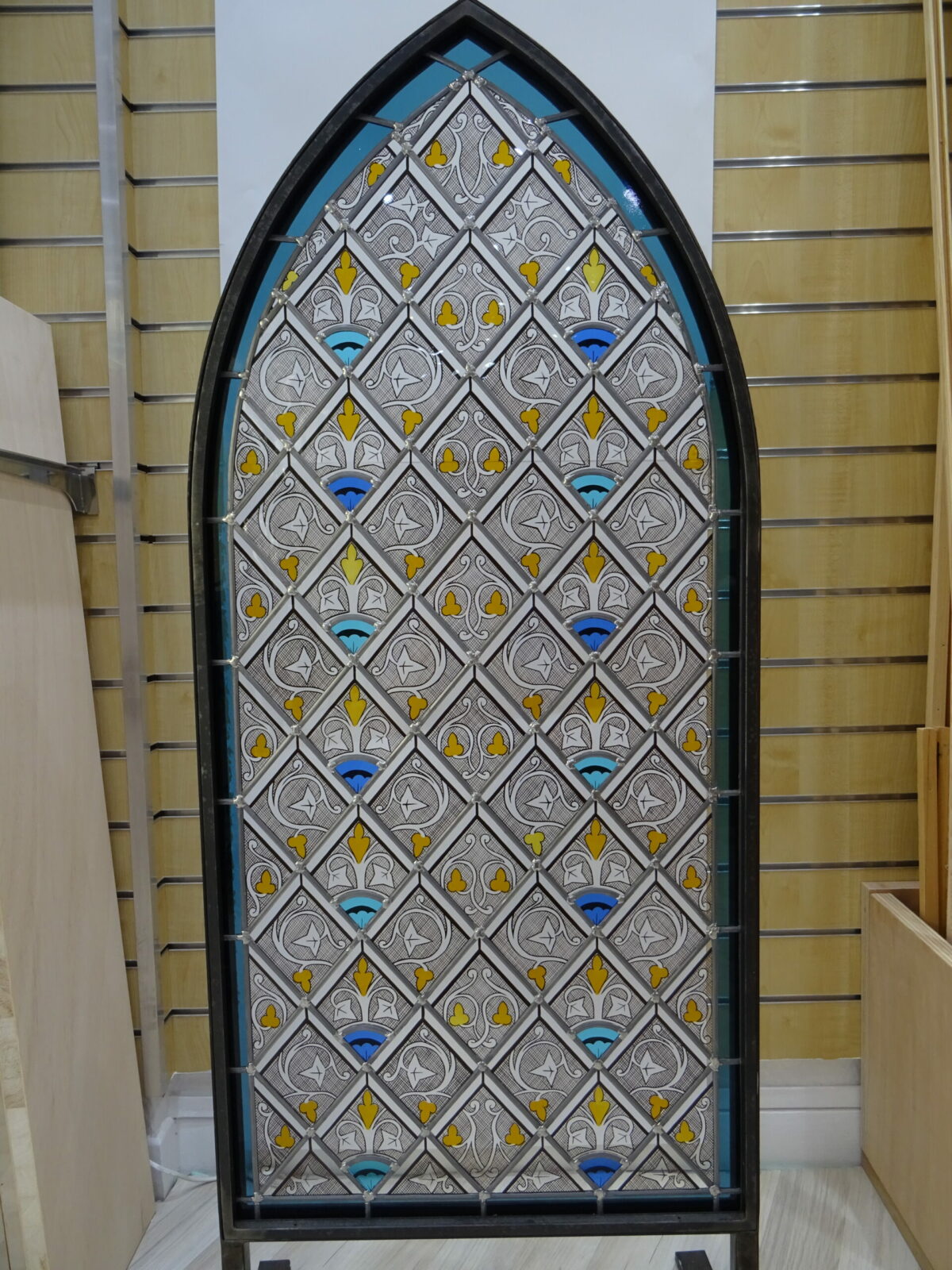
“Rectangular windows in “fly cage” colour
This style of painting on glass first appeared in the 13th century. It is still very much alive today, especially in funeral chapels.
It shows a background squared off by fine lines of freehand grisaille painting. The subject is thus emphasised using the principle of the "negative" image.
These stained glass windows were mass produced in the 19th century, when they were widely used to decorate the windows of neo-Gothic churches.
In this panel, the foliage, painted entirely by hand, is deliberately modern in style, the interlacing enlivened by the more angular leaves and enhanced with silver yellow.
This style allows plenty of light through, but has a blackout effect that is enhanced by playing with the spacing and tone of the grid lines.
The stained-glass window, in the form of a pointed arch, is mounted in a wrought-iron frame on a base designed by the wrought-iron artist Éric Bonnot, so that it can be used as a mobile screen.

